TWO SNAILS ON THE BARK OF THE PINE
One hot summer day back then in 2019, while wandering through the pine forest, I came across two snails on the bark of the same tree.
The encounter happened fairly early in the morning, so despite the temperature already being pretty high, there was still humidity in the shade under the old pines.
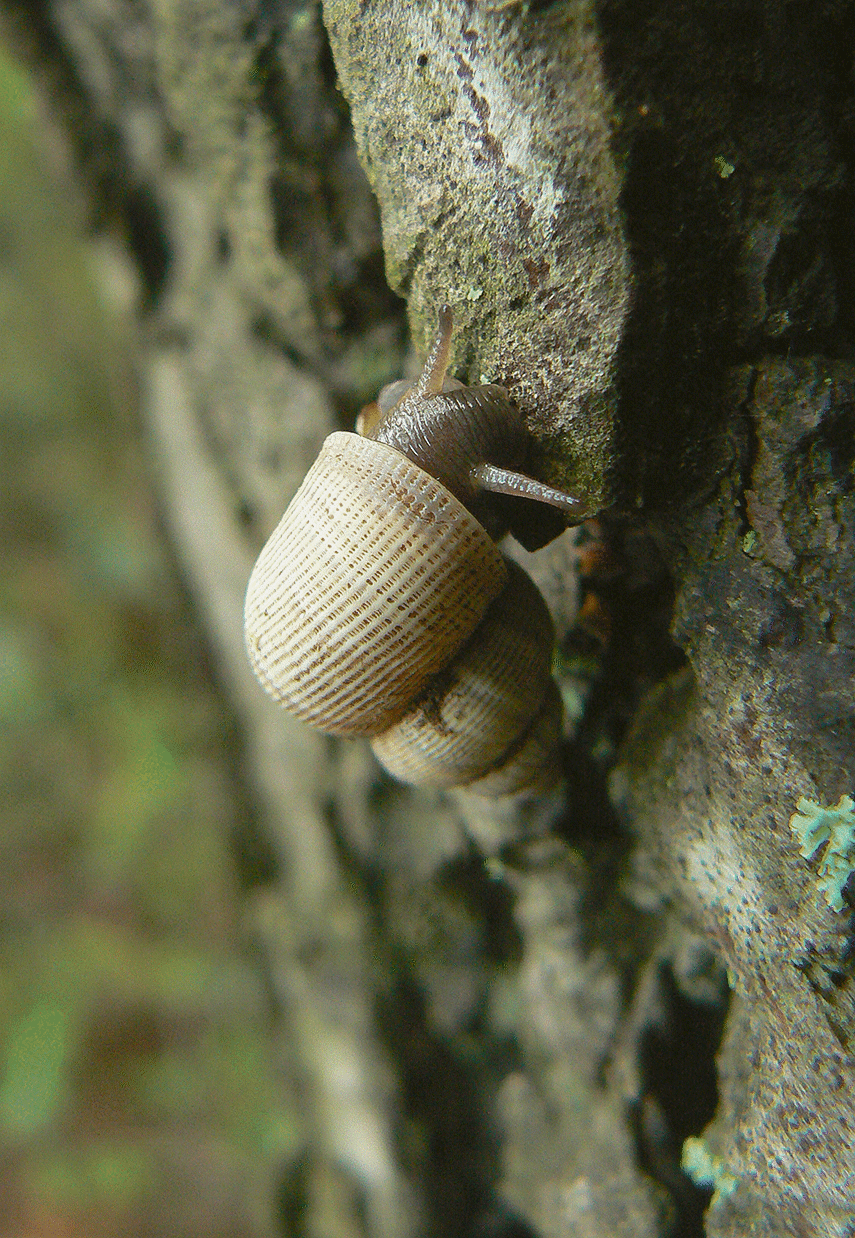
That's why this snail activity isn't surprising at all.
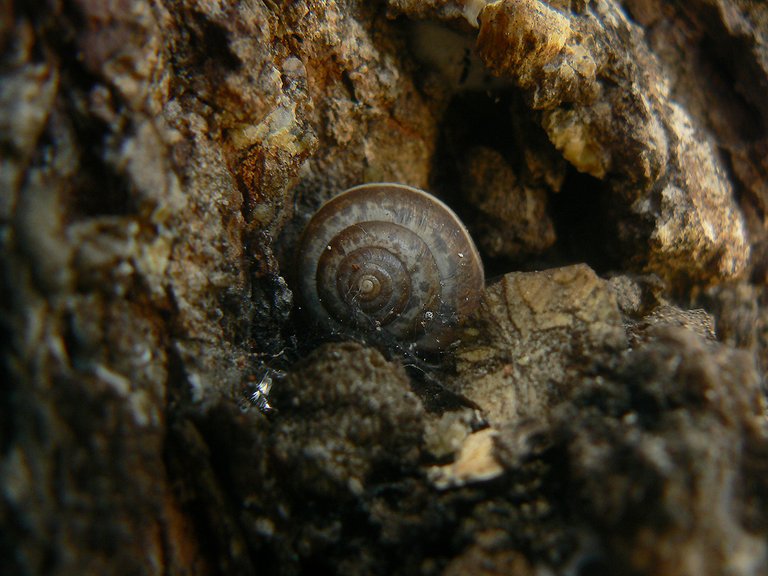
One of them, the Helicella itala from the Geomitridae family was hidden and sealed inside its shell, so I took only one photograph ...
... but the other one, this Pomatias elegans from the Pomatiidae family ...
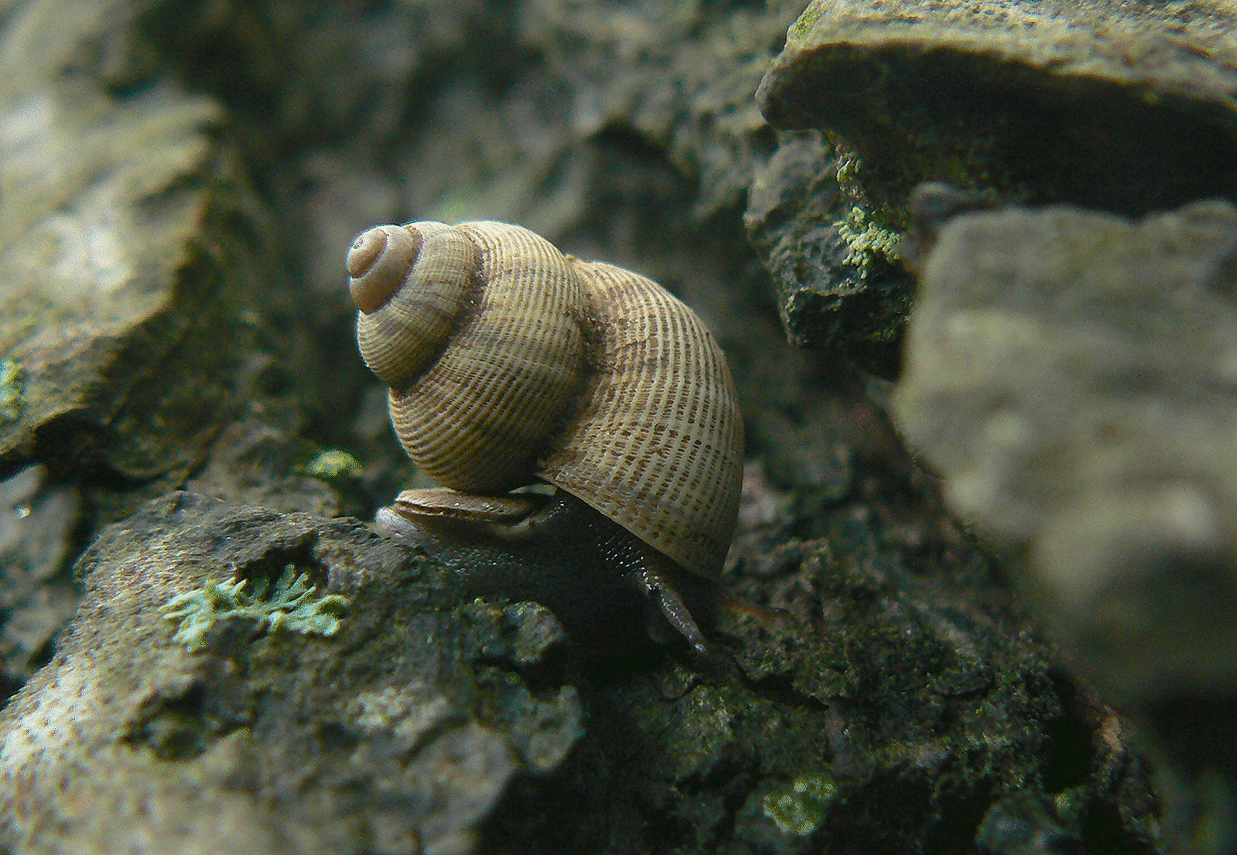
... was slowly crawling to one of the crevices of the bark, so I took a series of shots that a couple of years later, ended up forming this GIF.
These interesting snails look more like coastal sea snails than the usual terrestrial species. The Pomatiidae family is actually a lineage closely related to the Littorinidae (periwinkles) common in coastal habitats. They have adapted to terrestrial life and are sometimes called "Land winkles".
Looking at fossils and different contemporary groups of terrestrial snails, many signs point towards the idea that the transition from the sea to dry land took place several times in the evolutionary history of these mollusks. Even today, some Pomatiidae still live in the upper parts of the intertidal zone as terrestrial animals directly exposed to salty water, very close to their marine relatives. These modern species are not the ones that have performed the transition on land millions of years ago, but a look at them and their lifestyle & habitat can give an idea of how the change could have happened.

AND THAT'S IT. AS ALWAYS IN THESE POSTS ON HIVE, THE PHOTOGRAPHS ARE MY WORK - THE END.
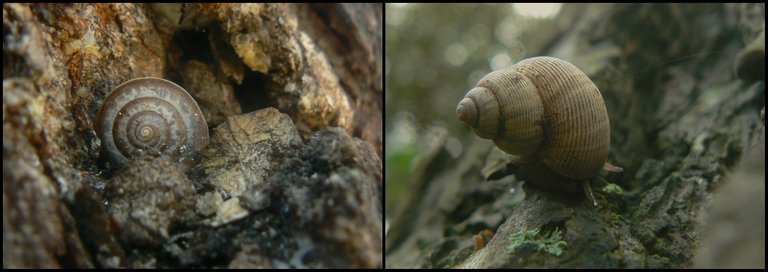
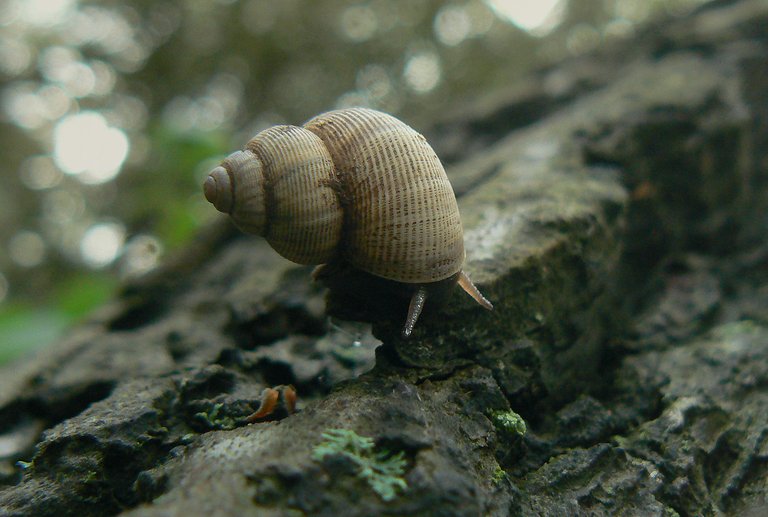
The people doing V2K with remote neural monitoring want me to believe this lady @battleaxe is an operator. She is involved deeply with her group and @fyrstikken . Her discord is Battleaxe#1003. I cant prove she is the one directly doing the V2K and RNM. Doing it requires more than one person at the least. It cant be done alone. She cant prove she is not one of the ones doing it. I was drugged in my home covertly, it ended badly. They have tried to kill me and are still trying to kill me. I bet nobody does anything at all. Ask @battleaxe to prove it. I bet she wont. They want me to believe the V2K and RNM in me is being broadcast from her location. And what the fuck is "HOMELAND SECURITY" doing about this shit? I think stumbling over their own dicks maybe? Just like they did and are doing with the Havana Syndrome.
They are reckless and should have shown the proper media what they had before taking me hostage for 5 years.
What would you say while having a gun pointed at your head from an undisclosed location? Have people find it? My hands are tied while they play like children with a gun to my head. Its a terrorist act on American soil while some yawn and say its not real or Im a mental case. Many know its real. This is an ignored detrimental to humanity domestic threat. Ask informed soldiers in the American military what their oath is and tell them about the day you asked me why. Nobody has I guess. Maybe someone told ill informed soldiers they cant protect America from military leaders in control with ill intent. How do we protect locked up soldiers from telling the truth? https://ecency.com/fyrstikken/@fairandbalanced/i-am-the-only-motherfucker-on-the-internet-pointing-to-a-direct-source-for-voice-to-skull-electronic-terrorism
😀 Why two copy-paste comments? I mean, I saw it the first time ... and many times before. Tell me a bit more about this obsession of yours, and what you exactly hope to achieve with relentless spamming? Personally, I don't mind these comments. But still ... it's bizarre ... not so much the text, which is ok as a Science fiction thriller idea ... but this bombarding with comments .. and always the same... what you think you'll achieve with this?
a more complete message. the military needs to step in on the judicial system and beyond. I expect less incarcerated people and unshackled comfortable conditions for detained people that dont deserve jail or harsh unneeded prison time. They use this shit to create prison for profit and control of your thoughts. There's a shit load to this and its hard to type around, its intense.
Many forms of the judicial are responsible. The ones in my head have documented this and wont stop until its done. The cunts need to hand over the keys to the ones they control with this or create an incarcerated lifetime of their own. I would start by contacting @fyrstikken the Viking now, give him what he needs to make it a smooth transition. Bad day harshest fall for them if they dont. They know who im talking to and should prepare for the worst if they wait. I hope they never rest in peace if they wont make that call today. Hope this helps dude.
Wow it is really nice with the capturing, awesome work
The people doing V2K with remote neural monitoring want me to believe this lady @battleaxe is an operator. She is involved deeply with her group and @fyrstikken . Her discord is Battleaxe#1003. I cant prove she is the one directly doing the V2K and RNM. Doing it requires more than one person at the least. It cant be done alone. She cant prove she is not one of the ones doing it. I was drugged in my home covertly, it ended badly. They have tried to kill me and are still trying to kill me. I bet nobody does anything at all. Ask @battleaxe to prove it. I bet she wont. They want me to believe the V2K and RNM in me is being broadcast from her location. And what the fuck is "HOMELAND SECURITY" doing about this shit? I think stumbling over their own dicks maybe? Just like they did and are doing with the Havana Syndrome.
They are reckless and should have shown the proper media what they had before taking me hostage for 5 years.
What would you say while having a gun pointed at your head from an undisclosed location? Have people find it? My hands are tied while they play like children with a gun to my head. Its a terrorist act on American soil while some yawn and say its not real or Im a mental case. Many know its real. This is an ignored detrimental to humanity domestic threat. Ask informed soldiers in the American military what their oath is and tell them about the day you asked me why. Nobody has I guess. Maybe someone told ill informed soldiers they cant protect America from military leaders in control with ill intent. How do we protect locked up soldiers from telling the truth? https://ecency.com/fyrstikken/@fairandbalanced/i-am-the-only-motherfucker-on-the-internet-pointing-to-a-direct-source-for-voice-to-skull-electronic-terrorism
The people doing V2K with remote neural monitoring want me to believe this lady @battleaxe is an operator. She is involved deeply with her group and @fyrstikken . Her discord is Battleaxe#1003. I cant prove she is the one directly doing the V2K and RNM. Doing it requires more than one person at the least. It cant be done alone. She cant prove she is not one of the ones doing it. I was drugged in my home covertly, it ended badly. They have tried to kill me and are still trying to kill me. I bet nobody does anything at all. Ask @battleaxe to prove it. I bet she wont. They want me to believe the V2K and RNM in me is being broadcast from her location. And what the fuck is "HOMELAND SECURITY" doing about this shit? I think stumbling over their own dicks maybe? Just like they did and are doing with the Havana Syndrome.
They are reckless and should have shown the proper media what they had before taking me hostage for 5 years.
What would you say while having a gun pointed at your head from an undisclosed location? Have people find it? My hands are tied while they play like children with a gun to my head. Its a terrorist act on American soil while some yawn and say its not real or Im a mental case. Many know its real. This is an ignored detrimental to humanity domestic threat. Ask informed soldiers in the American military what their oath is and tell them about the day you asked me why. Nobody has I guess. Maybe someone told ill informed soldiers they cant protect America from military leaders in control with ill intent. How do we protect locked up soldiers from telling the truth? https://ecency.com/fyrstikken/@fairandbalanced/i-am-the-only-motherfucker-on-the-internet-pointing-to-a-direct-source-for-voice-to-skull-electronic-terrorism
I really like snails a lot. They're my favorite bug like creature. In Europe they're a lot bigger than the ones back home in Canada - probably 3x bigger or more. The ones you found are really cool looking. I like the gifs! Nice ones.
Thanks. Didn't know that the European ones are bigger. There is a nice variety of species here. In the tropics, the variety is surely bigger and quite spectacular, judging from what I saw here on HIVE from people who live in those parts of the globe.
What a amazing snail with a different shell from the common one have ever see before...
Your content has been voted as a part of Encouragement program. Keep up the good work!
Use Ecency daily to boost your growth on platform!
Support Ecency
Vote for new Proposal
Delegate HP and earn more
my boss animal can be eaten or not and how can the picture move
Beautiful snails photos, Australia has largest types about length of 70 cm, if you like eating small snails with spices North Africa is the best destination 👍
I agree with you, because as you said, this snail's basic habitat is coastal, unlike the snails in my area which have a softer shell shape, you take very good pictures
this snail looks so pretty and cool and i really like it.
Please enjoy my POB + VYB rewards ~ Your superb post deserves much more (in my opinion).
!hivebits !LUV !LOL
@trading-tokens(1/1) gave you LUV. H-E tools | connect | <><
H-E tools | connect | <><
lolztoken.com
They're just so immersive.
Credit: reddit
@borjan, I sent you an $LOLZ on behalf of @trading-tokens
Use the !LOL or !LOLZ command to share a joke and an $LOLZ. (1/1)
Thank you 🙂Glad you like the post.
Creating a GIF of snail in movement must have taken quite of patience. Cool post, @borjan.
It only looks like something complicated🙂but to create that kind of GIF is actually easy.